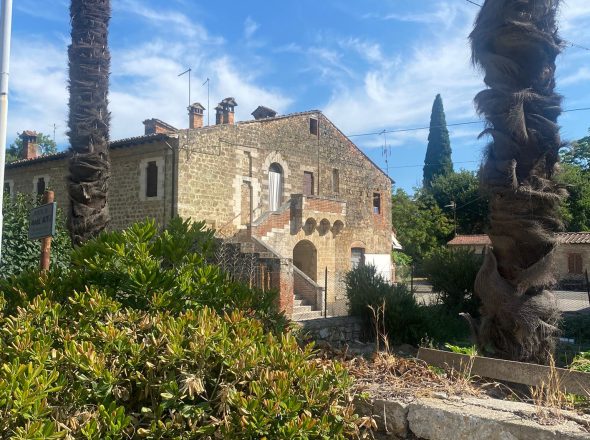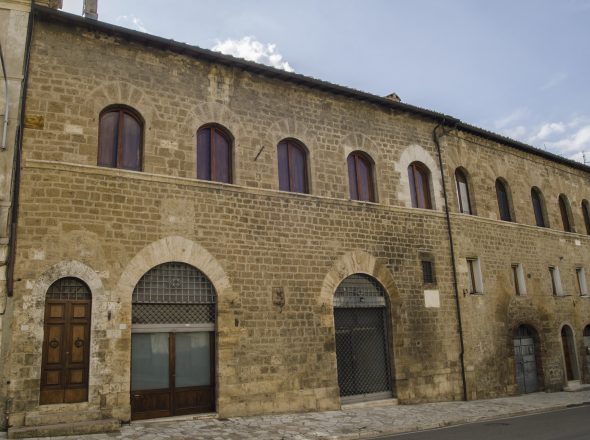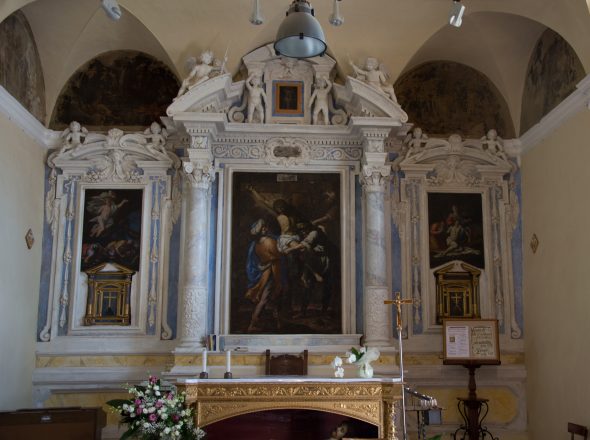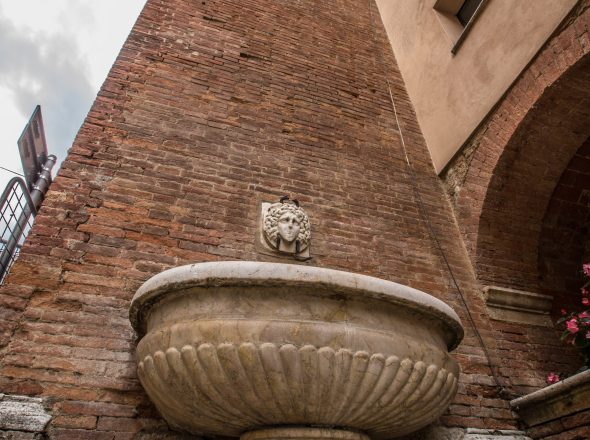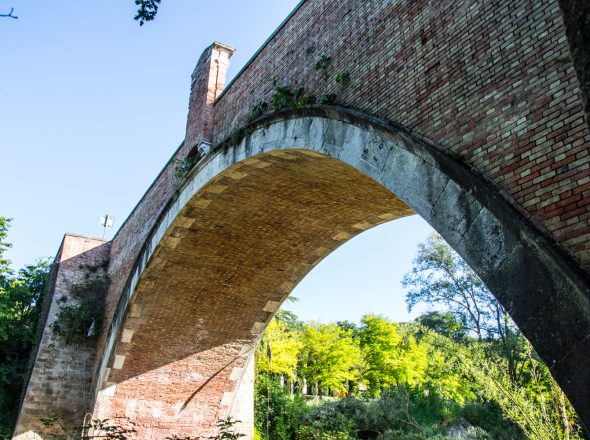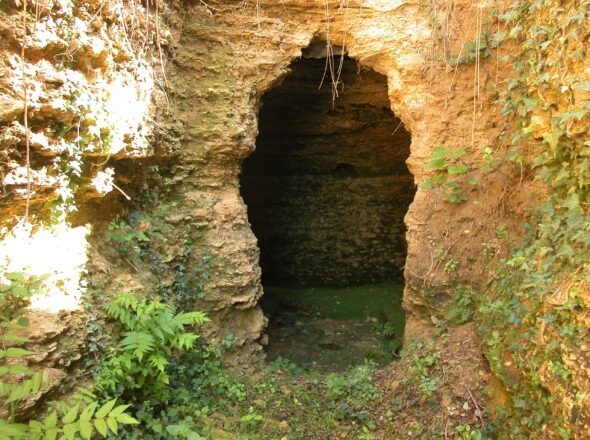In this flat area of the town—formerly called the “Piana” or “Pianella”—the so-called “fontana della Pieve” already existed in the 15th century, documented in municipal records dated 1471 and 1482.
The fountain’s original appearance, recorded in a 1653 drawing and an 1842 inventory, featured a circular basin with a central column, a common design of the period that served to collect and distribute water. The current configuration results from a 19th-century renovation designed by the municipal engineer Lorenzo Pini, and it preserves the fountain’s public function and historical memory.
Nestled in the rural landscape just outside the center of Asciano, near the Bestina stream, stands an imposing building known as Palazzo Tolomei, often mistakenly associated with the Cacciaconti family.
The War Memorial of Asciano, dedicated to the memory of fellow citizens who fell during the First World War, is the result of a deep civic and collective commitment. Immediately following the end of the conflict on November 4, 1918, the municipal council publicly expressed its intention to honor the fallen and celebrated the Italian victory with a patriotic manifesto addressed to the citizens.
the Oratory of the Holy Nail is located next to the ancient cemetery of the Basilica of Sant Agathe, inside a fortified tower converted into a religious building in the 17th century. It is a suggestive and secluded place, rich in spirituality and collective memory.
Located in the Prato suburb, just outside the town walls, Palazzo Spannocchi is one of the most fascinating historical buildings in Asciano, though it is shrouded in an air of mystery.
Located near the Basilica of Saint Agathe, Tolomei Palace is one of the most significant historical buildings in Asciano, linked to the prominent Sienese Tolomei family
The oratory once housed Asciano’s first Museum of Sacred Art, and today, with its statue of the Madonna of Loreto, it serves as a home for pilgrims.
One of the most iconic symbols of Asciano. The civic tower, with its ancient clock marking time with unwavering precision, rises above the rooftops of the village.
At the entrance to Asciano, the Ponte del Garbo stands with majestic simplicity, dominating the landscape and offering a fascinating glimpse into the history and architecture of the region.
An Etruscan necropolis, in use from the late 5th to the 1st century BC, the final resting place of the Hepni family.

